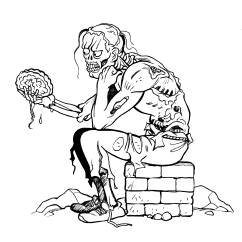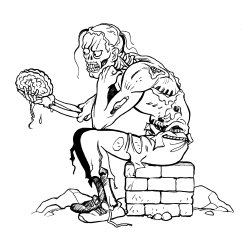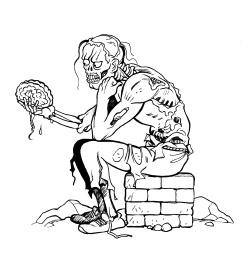A common trope in fantasy literature is a magician finding a mysterious, ancient tome of spells. Essentially a big dusty book written in a language that is long forgotten, too complex for a human to understand, or otherwise unintelligble as such. However, the versed magician knows how to read the book out loud, and as they do that, magic happens! Portals open to other dimensions, food appears, fireballs appear and smite the magician’s enemies. Speaking the magic language alters reality and performs miracles. The magician doesn’t really understand how this happens, but they know that if they utter the words, it (typically) does.
A novice programmer is wondering, how to find how to sort a list of data into alphabetical order in Python. They find Python-incantations from StackExchange, which they copy and paste to their code editor, and miracles happen – the list is sorted. The programmer doesn’t understand what the code exactly does, but with the given test data they feed in, the sorting happens.

Both of these characters are gazing at something before them that look like strange magical runes that have power to make things happen. The magician is not completely aware, what exactly they have to avoid to mispronounce, in effort to summon a lemon to the dinner table instead of a demon – and what other hazards the spells in this ancient language may include. The novice programmer doesn’t know in which special cases this copied program code doesn’t work, and how it fails, when it fails.
The magician is a rune reading magician. The novice programmer is a Rune Coder – essentially a hazard for their own self and those around them, as much as the rune reading magician reading runes scribed with poor handwriting, or just not all completely familiar for them, in effort to conjure up exploding fireballs in the middle of a room.
The Rune Coder is a concept I have used for over a fifth of a century now. Now, a new breed has appeared on the field. People are asking ChatGPT to generate program code for them. Still, they don’t know what they are really receiving. Instead of a rune reading magician, we now have a shaman who is talking to the spirits of great power.
The public is fearing these shamans making the mistake of releasing a wish granting demon from a bottle to wreak havoc and doom among the humankind. What is in practise a more relevant problem today with rune and shaman coding is that they just still don’t know the full results of their spells and wishes, and what kind of problems arise from this particular magic. Once again: in which cases does the program code not work, and how exactly it fails, when it fails.


